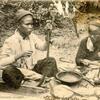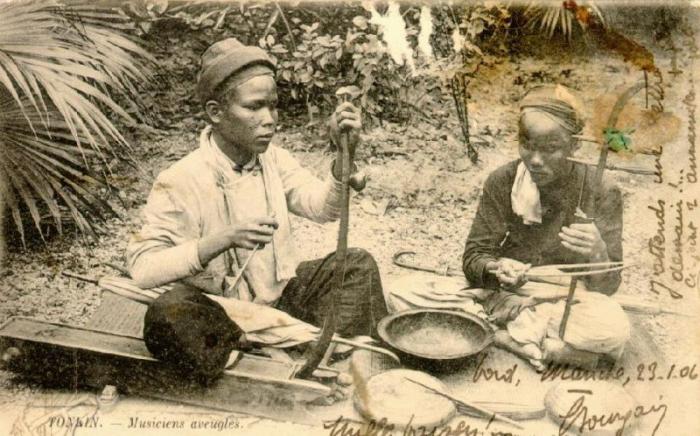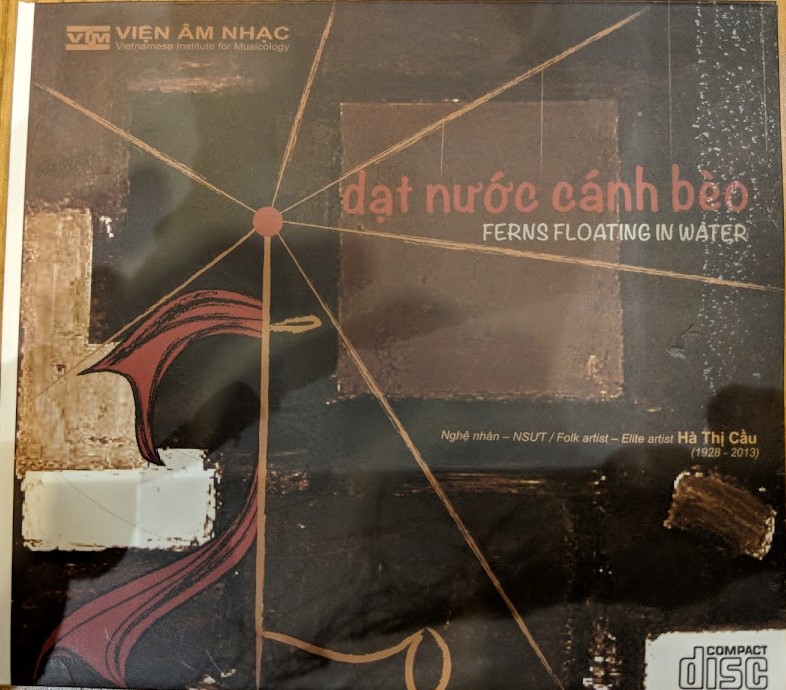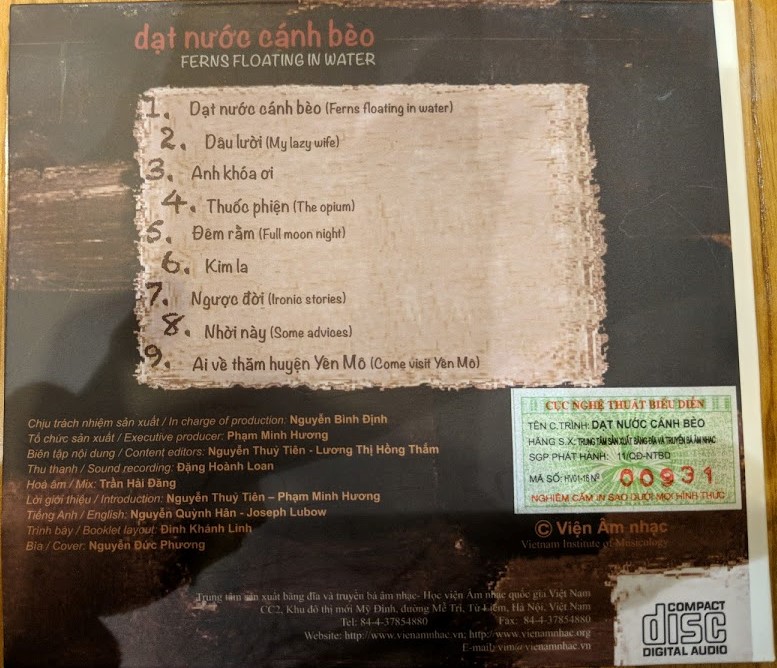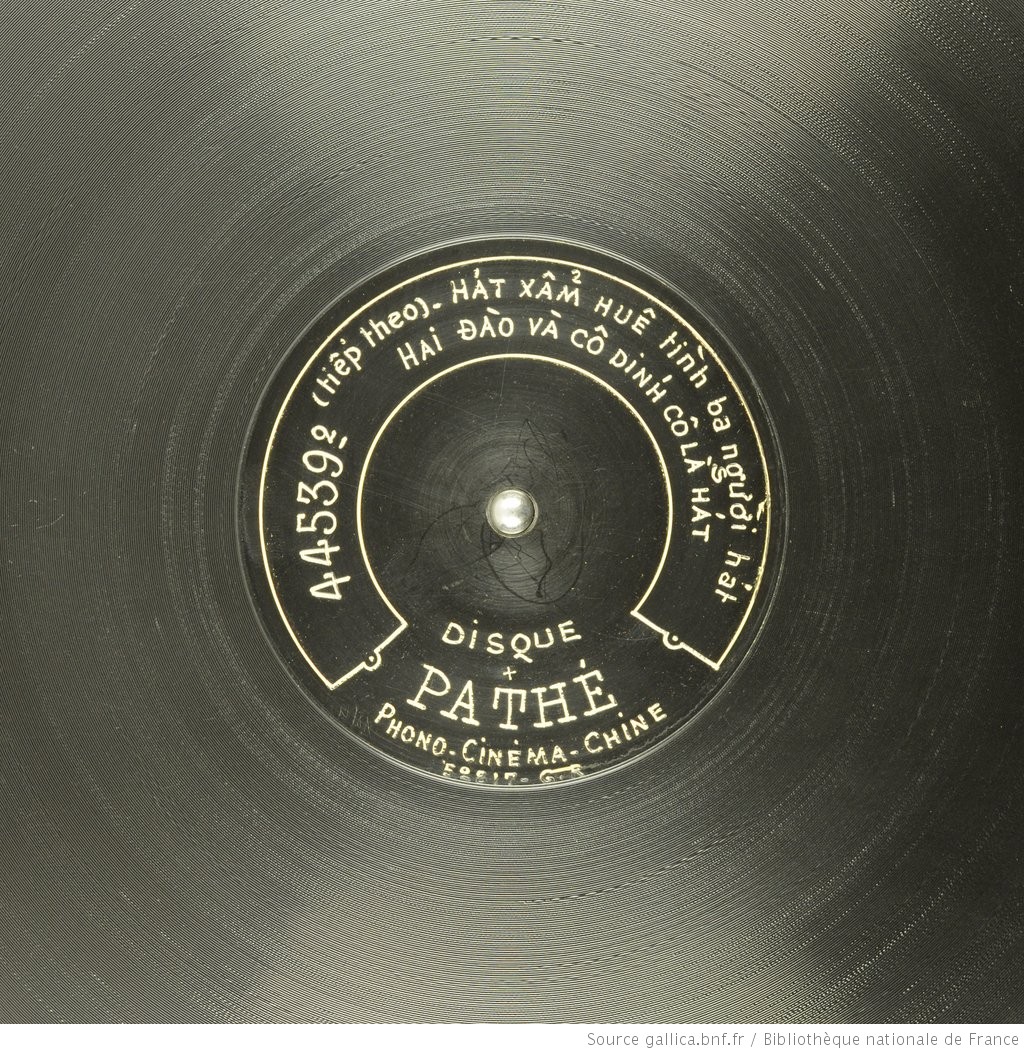Folk Arts Studies: A Research Project in the Vietnamese Folk Arts Heritage
HÁT XẨM: Folk Songs of the Blind Traveling Beggars
Phan Gia Anh Thư & Ngô Thanh Nhàn, October 14, 2017
The first International Conference on Safeguarding and Promotion of the Arts of Hát Xẩm in Contemporary Society coincides with The Annual Hát Xẩm Founder's Festival online via zoom at 3 entry points Hà Nội, Ninh Bình and Temple University.
Open Call for Papers, December 7, 2021 at 7:00am Hanoi time, December 6, 2021 at 7:00pm US EST. The Vietnamese Studies Group/AAS awards a grant for a qualified junior scholar to the Conference as a Special Project. The Conference will select the best papers from its Proceedings to be published in a Special Issue of The Journal of Vietnamese Studies.
A Sketch
Basic information about 喝眈 Hát Xẩm "folk songs of the blind traveling beggars."
The National Treasure Artist Hà Thị Cầu (VietnamNet, 7/18/2012) and her self-made đàn nhị "two-string fiddler."
- Xẩm artists believe that hát xẩm was invented by Prince Trần Quốc Đĩnh in the XIVth Century. He was blinded by his brother and left to die in the forest. He made the first đàn xẩm (đàn song, or đàn bầu "monochord"), composed songs and performed to make a living...
- The current first reference of the term "xẩm," and its meaning (special thanks to The Etymology Group):
- xẩm, lat. "cæcus [blind], dicitur cum contemptu", p. 881
- rŏan xẩm, lat. "cæcorum adunatio [blind beggar band, phường xẩm]", p. 881
- đàn cò ke, lat. "lyra ruſtica mendici [rustic lyre of the beggars, đàn nhị]", p. 125 & p. 353
(cf. Alexandro de Rhodes, Dictionarium Annamiticum Lusitanum et Latinum, Romæ 1651, original copy at the Vatican Apostolic Library, RACC GEN CHIGI IV 01247, 16x22cm). - The current first reference of Nôm ideogram 眈 xẩm and its contexts:
- 眈眜 xẩm mắt, lat. "oculorum axiem perſeringere; Oculis caliginem effundere," p. 648
- 弦𪂮稽 đờn cò ke, lat. "lyra ruſtica mendici," p. 69
(cf. Pierre Pigneaux de Béhaine, Dictionarium annamitico-latinum, Bibliothèque nationale. Manuscrit 1772.). - Xẩm is written in Nôm as 深, 眈, 目審, *嬸, 亻審, or 審⺀, etc. found mostly in foreign sources.
- Xẩm artists today are scattered in the lower Red River Delta of north Vietnam, Quảng Ninh, Huế, and Hồ Chí Minh City.
- There are 27 xẩm song lyrics found in Văn đàn bảo giám "Primer Literary Collection", by Trần Trung Viên, (1926) and 186 xẩm song lyrics in Tìm hiểu về Nghệ thuật Hát Xẩm by Trần Việt Ngữ (2017).
- Trần Việt Ngữ (2017) listed 7 xẩm chính tông "authentic Xẩm melodic instrumentals" (82 songs), and 9 borrowed melodic instrumental styles (40 songs), stories (35 songs) and 40 songs from poems of famous authors.
- Giạt nước cánh bèo "Like a fern flower petal in the angry stream", DVD by the National Academy of Music, 1998 (listen to audios listed on the right column)
Gustave Emile Dumoutier Notes
in Les chants et les traditions populaires des Annamites: Recueillis et traduits, Paris: Ernest Leroux, Éditeur (1890: pp. xiii-xiv):
“One encounters in the streets the traveling singers, who are always blind, and are called thằng xẩm, or con xẩm. They got together in three or four in the way which forms an orchestra and sing together, with their own accompaniment, an orchestra of the blind is composed of special instruments, among them cái đàn bầu, which is a guitar with one single string stretched by an arc pole over a resonant box in a long rectangular shape; a cái sinh, a piece of wood over which one beats the cadence; a drum (trống giáng); the castanets of particular shape (cái cập kè) and a small tympan of copper which one holds with the big toe (cái thanh la).
The singing of the blind is generally rapid and stirring, and the accompaniment lively and very rhythmic. There are fake blinds, it is a profession like the other; when they find one blind in a poor family, the entire family emulates the blindness and forms a concert of the blinds. The airs [melodies] are transmitted most usually between the Annamites from one individual to the other, the mode of music notation is very imperfect; there exist only pieces of instrumental music.”

